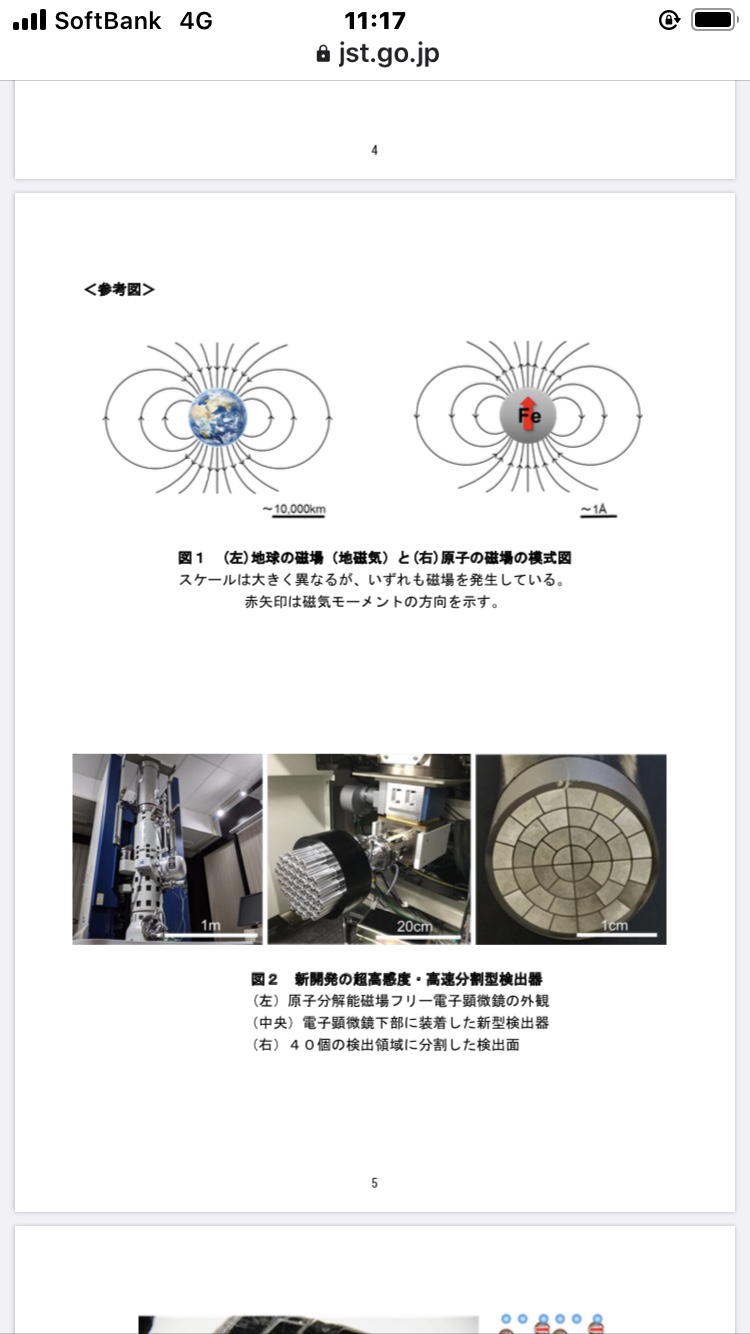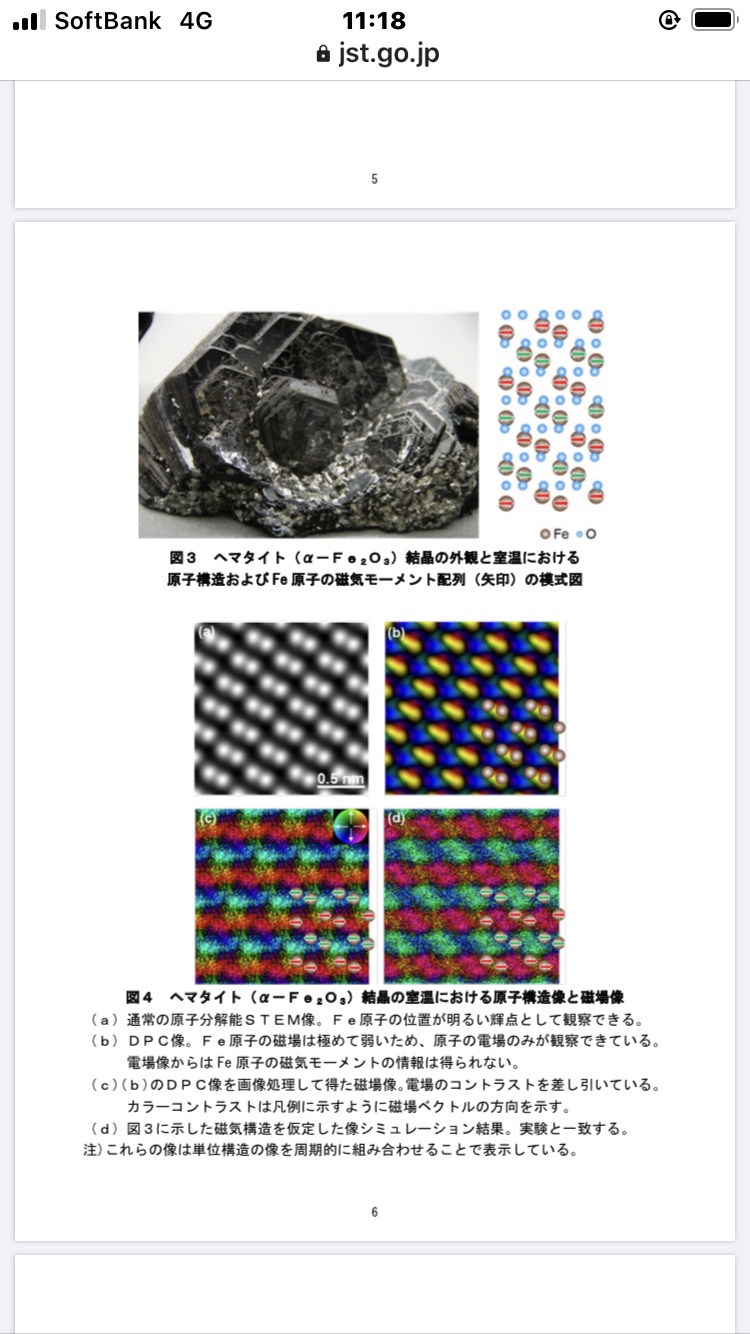

東大・日本電子:磁場を原子レベルで直接観察(動画):
Tokyo Univ/JEOL: Direct observation of magnetic field at atomic level:
东京大学 / JEOL:直接观察原子水平的磁场:
ー高性能電子顕微鏡・MARSを開発―
東京大
電子顕微鏡・日本電子研究チームは、高性能な電子顕微鏡「原子分解能磁場フリー電子顕微鏡(MARS)」を開発した。
磁石の起源・原子レベルの磁場を、世界で初めて直接観察することに成功した。
2月9日付の英科学誌ネイチャー電子版に発表した。
原子分解能磁場フリー電子顕微鏡(MARS):
この観察技術は、
- 磁石や磁性半導体、
- 磁気メモリーなど、
幅広い研究開発に役立つ。
東大の柴田直哉教授:
磁気メモリーの記憶容量を引き上げたり、EV磁石を劣化しにくくしたりする。
原子レベル磁場を直接観察:
- 今回の観察対象は鉄鉱石の一種、
- 赤鉄鉱(ヘマタイト)結晶中の鉄原子。
この結晶は鉄原子の層と酸素原子の層が交互に積み重なっている。
大幅に冷却すると、磁場の向きが90度回転して垂直となり、理論計算の結果と一致した。
従来の問題点:
電子顕微鏡を、観察したい試料を強い磁場の中に置き、
電子線を当てると、磁場が拡大レンズの役割を果たす。
しかし、試料自体が磁性を持つ材料の場合、うまく観察できない場合がある。
新型MARSを開発:
2019年に拡大レンズ役の磁場を、上下二段とした。
「試料を置く部分のみに、互いの磁場を打ち消し合うMARS」を開発した。
その後、
試料原子の電場と磁場を、フィルターで分離した。
「磁場の微弱信号を捉える超高感度検出器」を組み合わせた。
時事ドットコム
https://www.jiji.com/jc/article?k=2022021000046&g=soc
共同発表:世界初の原子分解能電子顕微鏡で磁力の起源をとらえた~磁石、半導体、量子技術など最先端マテリアル研究開発を加速~
https://www.jst.go.jp/pr/announce/20220210/index.html
Real-space visualization of intrinsic magnetic fields of an antiferromagnet
Nature
Abstract
Characterizing magnetic structures down to atomic dimensions
is central to the design and control of nanoscale magnetism in materials and devices.
However,
real-space visualization of magnetic fields at such dimensions has been extremely challenging.In recent years,
atomic-resolution differential phase contrast scanning transmission electron microscopy (DPC STEM)1has enabled direct imaging of electric field distribution even inside single atoms2.
Here we show
real-space visualization of magnetic field distribution inside antiferromagnetic haematite (α-Fe2O3) using atomic-resolution DPC STEM in a magnetic-field-free environment3.After removing the phase-shift component due to atomic electric fields and improving the signal-to-noise ratio by unit-cell averaging,
real-space visualization of the intrinsic magnetic fields in α-Fe2O3 is realized.
These results open a new possibility for real-space characterization of many magnetic structures.